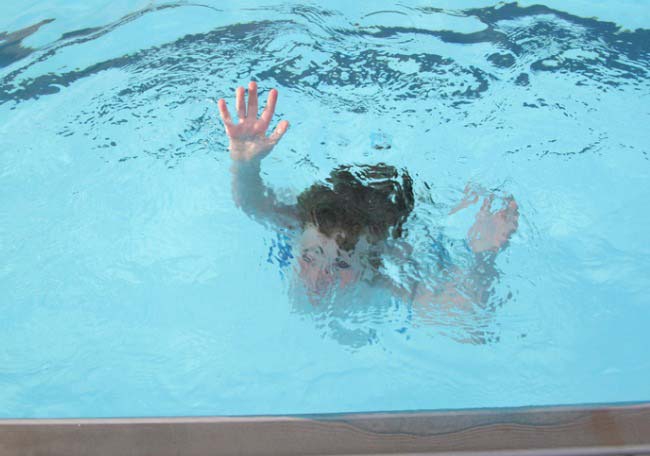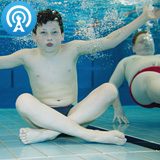Prevención de ahogamiento

1. Centers for Disease Control and Prevention. Welcome to WISQARS. Available at: https://www.cdc.gov/ injury/wisqars/index.html. Accessed March 7, 2019
2. Kyriacou DN, Arcinue EL, Peek C, Kraus JF. Effect of immediate resuscitation on children with submersion injury. Pediatrics. 1994;94(2, pt 1):137–142
3. Suominen P, Baillie C, Korpela R, Rautanen S, Ranta S, Olkkola KT. Impact of age, submersion time and water temperature on outcome in neardrowning. Resuscitation. 2002;52(3): 247–254
4. Quan L, Wentz KR, Gore EJ, Copass MK. Outcome and predictors of outcome in pediatric submersion victims receiving prehospital care in King County, Washington. Pediatrics. 1990;86(4): 586–593
5. Stallman RK, Moran Dr K, Quan L, Langendorfer S. From swimming skill to water competence: towards a more inclusive drowning prevention future. International Journal of Aquatic Research and Education. 2017;10(2):3. Available at: https://scholarworks.bgsu. edu/ijare/vol10/iss2/. Accessed March 7, 2019
6. Water Safety USA. Become water competent. Available at: https://www. watersafetyusa.org/water-competency. html. Accessed March 8, 2019
7. Idris AH, Berg RA, Bierens J, et al; American Heart Association. Recommended guidelines for uniform reporting of data from drowning: the “Utstein style”. Circulation. 2003; 108(20):2565–2574
8. Brenner RA, Trumble AC, Smith GS, Kessler EP, Overpeck MD. Where children drown, United States, 1995. Pediatrics. 2001;108(1):85–89
9. US Consumer Product Safety Commission. How to plan for the unexpected: preventing child drownings. Available at: https://cpsc.gov/safetyeducation/safety-guides/pools-and-spas. Accessed October 31, 2018
10. Mackay JM, Samuel E, Green A. Hidden Hazards: An Exploration of Open Water Drowning and Risks for Children. Washington, DC: Safe Kids Worldwide; 2018
11. Mackay JM, Steel A, Dykstra H, Wheeler T, Samuel E, Green A. Keeping Kids Safe in and Around Water: Exploring Misconceptions that Lead to Drowning. Washington, DC: Safe Kids Worldwide; 2016
12. Wu Y, Huang Y, Schwebel DC, Hu G. Unintentional child and adolescent drowning mortality from 2000 to 2013 in 21 countries: analysis of the WHO Mortality Database. Int J Environ Res Public Health. 2017;14(8):E875
13. Browne ML, Lewis-Michl EL, Stark AD. Watercraft-related drownings among New York State residents, 1988-1994. Public Health Rep. 2003;118(5):459–463
14. Lhatoo SD, Sander JW. Cause-specific mortality in epilepsy. Epilepsia. 2005;46 (suppl 11):36–39
15. Diekema DS, Quan L, Holt VL. Epilepsy as a risk factor for submersion injury in children. Pediatrics. 1993;91(3):612–616
16. Kemp AM, Sibert JR. Epilepsy in children and the risk of drowning. Arch Dis Child. 1993;68(5):684–685
17. Bell GS, Gaitatzis A, Bell CL, Johnson AL, Sander JW. Drowning in people with epilepsy: how great is the risk? Neurology. 2008;71(8):578–582
18. Guan J, Li G. Injury mortality in individuals with autism. Am J Public Health. 2017;107(5):791–793
19. Shavelle RM, Strauss DJ, Pickett J. Causes of death in autism. J Autism Dev Disord. 2001;31(6):569–576
20. Guan J, Li G. Characteristics of unintentional drowning deaths in children with autism spectrum disorder. Inj Epidemiol. 2017;4(1):32
21. Choi G, Kopplin LJ, Tester DJ, Will ML, Haglund CM, Ackerman MJ. Spectrum and frequency of cardiac channel defects in swimming-triggered arrhythmia syndromes. Circulation. 2004;110(15):2119–2124
22. Semple-Hess J, Campwala R. Pediatric submersion injuries: emergency care and resuscitation. Pediatr Emerg Med Pract. 2014;11(6):1–21; quiz 21–22
23. Irwin CC, Irwin RL, Ryan TD, Drayer J. The legacy of fear: is fear impacting fatal and non-fatal drowning of African American children? J Black Stud. 2011; 42(4):561–576
24. Quan L, Crispin B, Bennett E, Gomez A. Beliefs and practices to prevent drowning among Vietnamese-American adolescents and parents. Inj Prev. 2006; 12(6):427–429
25. Moore E, Ali M, Graham E, Quan L. Responding to a request: genderexclusive swims in a Somali community. Public Health Rep. 2010;125(1):137–140
26. Stempski S, Liu L, Grow HM, et al. Everyone Swims: a community partnership and policy approach to address health disparities in drowning and obesity. Health Educ Behav. 2015;42 (suppl 1):106S–114S
27. Rahman F, Bose S, Linnan M, et al. Costeffectiveness of an injury and drowning prevention program in Bangladesh. Pediatrics. 2012;130(6). Available at: www.pediatrics.org/cgi/content/full/ 130/6/e1621
28. Brenner RA, Taneja GS, Haynie DL, et al. Association between swimming lessons and drowning in childhood: a casecontrol study. Arch Pediatr Adolesc Med. 2009;163(3):203–210
29. American Red Cross. ACFASP scientific review: minimum age for swimming lessons. 2009. Available at: https:// scholarworks.bgsu.edu/ijare/vol3/iss4/ 13/. Accessed March 24, 2019
30. Quan L, Ramos W, Harvey C, et al. Toward defining water competency: an American Red Cross definition. International Journal of Aquatic Research and Education. 2015;9(1): 12–23
31. Haddon W Jr. The changing approach to the epidemiology, prevention, and amelioration of trauma: the transition to approaches etiologically rather than descriptively based. Am J Public Health Nations Health. 1968;58(8):1431–1438
Comentarios
Para ver los comentarios de sus colegas o para expresar su opinión debe ingresar con su cuenta de IntraMed.







